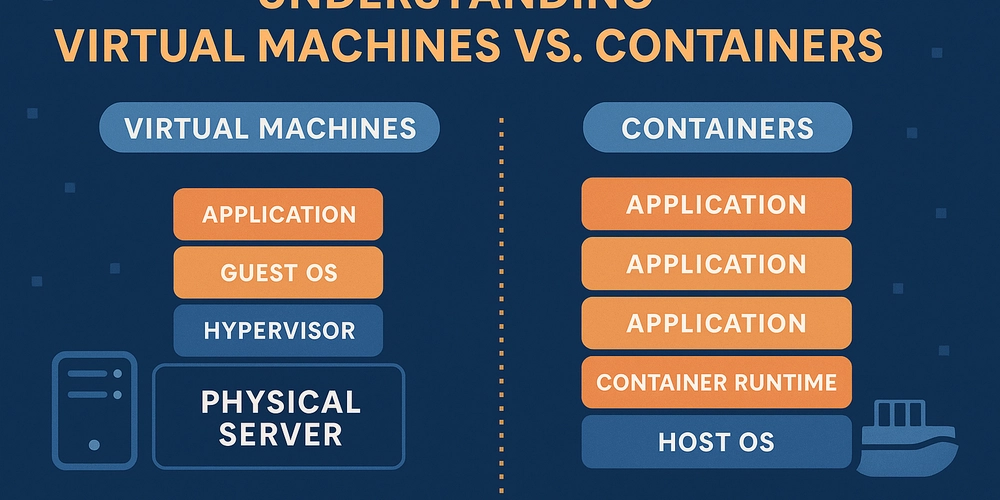Understanding Virtual Machines vs. Containers: A Complete Guide
In the fast-paced world of modern IT infrastructure, choosing the right environment for your applications is critical. Whether you're managing cloud-native services, deploying legacy software, or architecting a scalable system, the decision often boils down to two foundational technologies: virtual machines (VMs) and containers. Though they both offer isolated environments, their underlying mechanisms, resource footprints, and ideal use cases are quite different. This extended guide provides a thorough breakdown of VMs and containers, covering their definitions, architectural design, security considerations, real-world applications, and the situations in which each excels. Whether you're a developer, DevOps engineer, system architect, or tech decision-maker, this post will help you make informed decisions with confidence.

In the fast-paced world of modern IT infrastructure, choosing the right environment for your applications is critical. Whether you're managing cloud-native services, deploying legacy software, or architecting a scalable system, the decision often boils down to two foundational technologies: virtual machines (VMs) and containers. Though they both offer isolated environments, their underlying mechanisms, resource footprints, and ideal use cases are quite different.
This extended guide provides a thorough breakdown of VMs and containers, covering their definitions, architectural design, security considerations, real-world applications, and the situations in which each excels. Whether you're a developer, DevOps engineer, system architect, or tech decision-maker, this post will help you make informed decisions with confidence.










































































![Apple Developing Battery Case for iPhone 17 Air Amid Battery Life Concerns [Report]](https://www.iclarified.com/images/news/97208/97208/97208-640.jpg)
![Apple to Split iPhone Launches Across Fall and Spring in Major Shakeup [Report]](https://www.iclarified.com/images/news/97211/97211/97211-640.jpg)
![Apple to Move Camera to Top Left, Hide Face ID Under Display in iPhone 18 Pro Redesign [Report]](https://www.iclarified.com/images/news/97212/97212/97212-640.jpg)
![AirPods 4 On Sale for $99 [Lowest Price Ever]](https://www.iclarified.com/images/news/97206/97206/97206-640.jpg)












































































































_Inge_Johnsson-Alamy.jpg?width=1280&auto=webp&quality=80&disable=upscale#)


























































































































![[The AI Show Episode 145]: OpenAI Releases o3 and o4-mini, AI Is Causing “Quiet Layoffs,” Executive Order on Youth AI Education & GPT-4o’s Controversial Update](https://www.marketingaiinstitute.com/hubfs/ep%20145%20cover.png)
































































































































































![From Art School Drop-out to Microsoft Engineer with Shashi Lo [Podcast #170]](https://cdn.hashnode.com/res/hashnode/image/upload/v1746203291209/439bf16b-c820-4fe8-b69e-94d80533b2df.png?#)

![[FREE EBOOKS] Learn Computer Forensics — 2nd edition, AI and Business Rule Engines for Excel Power Users & Four More Best Selling Titles](https://www.javacodegeeks.com/wp-content/uploads/2012/12/jcg-logo.jpg)



































































































